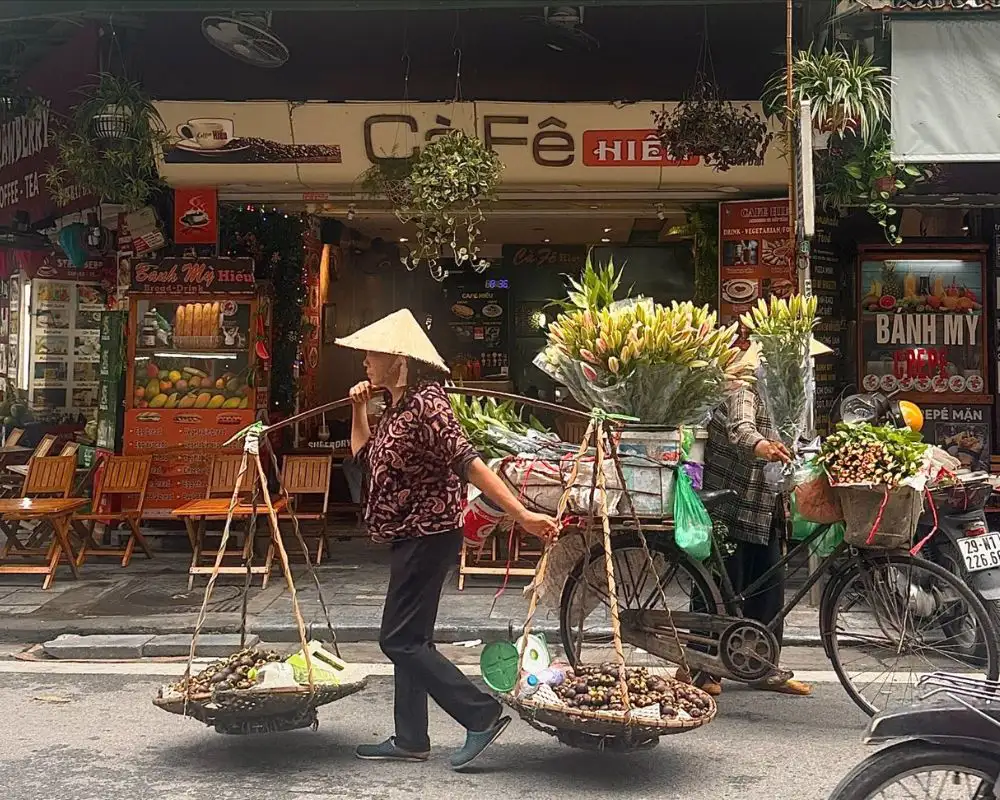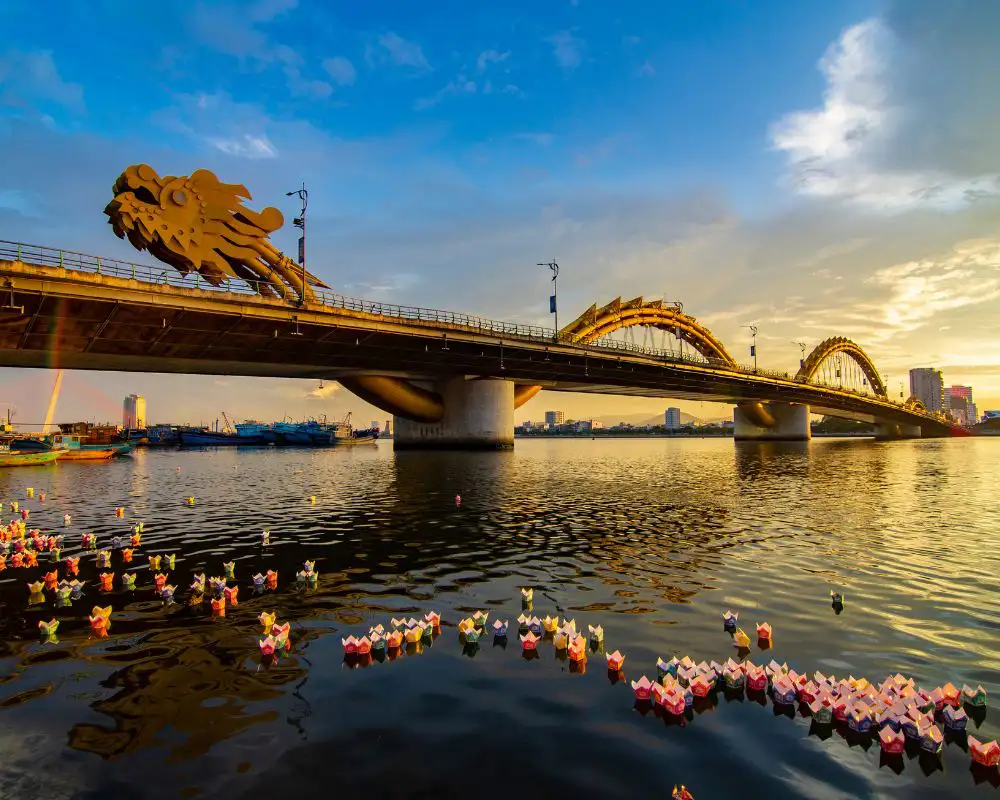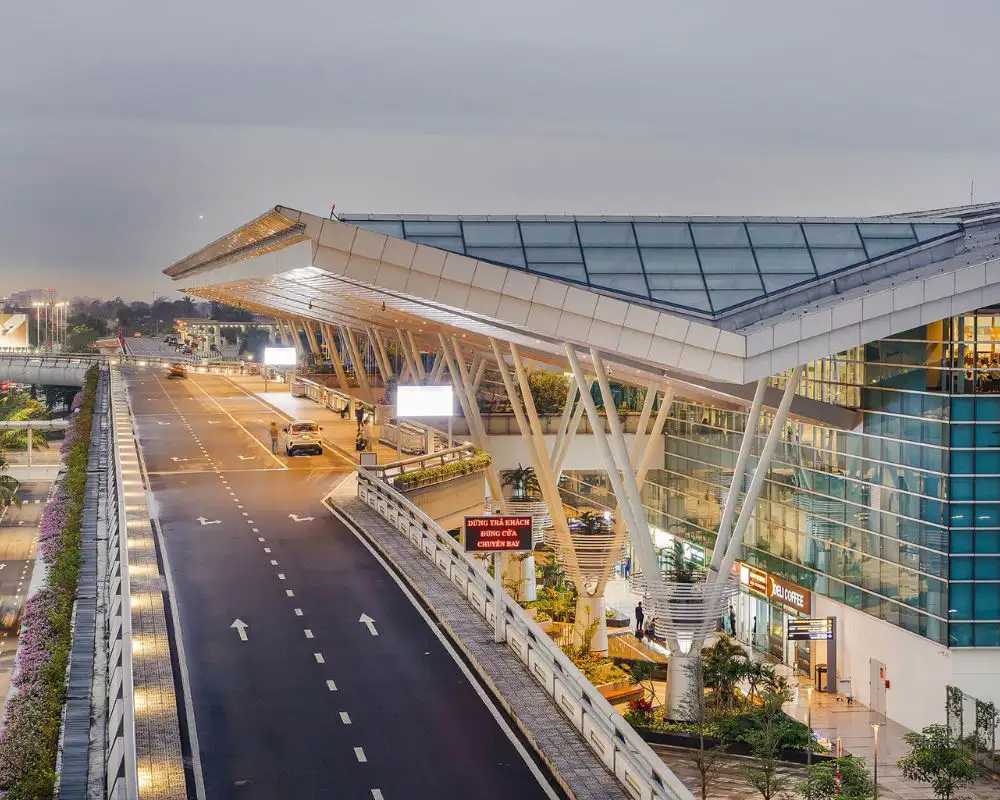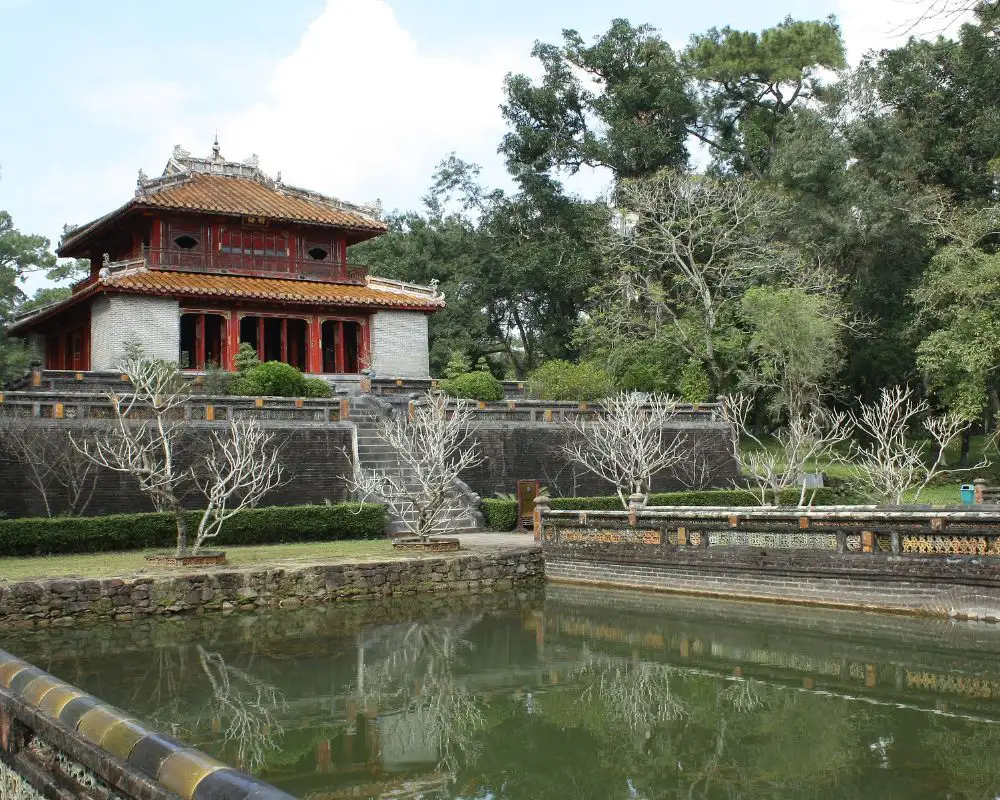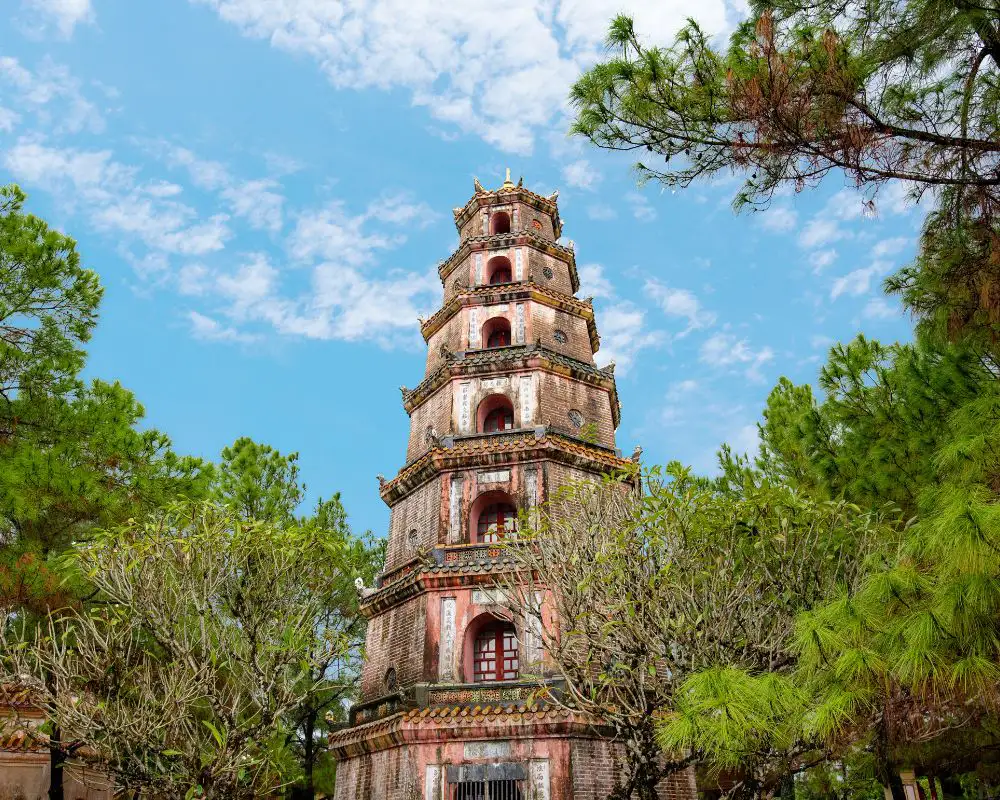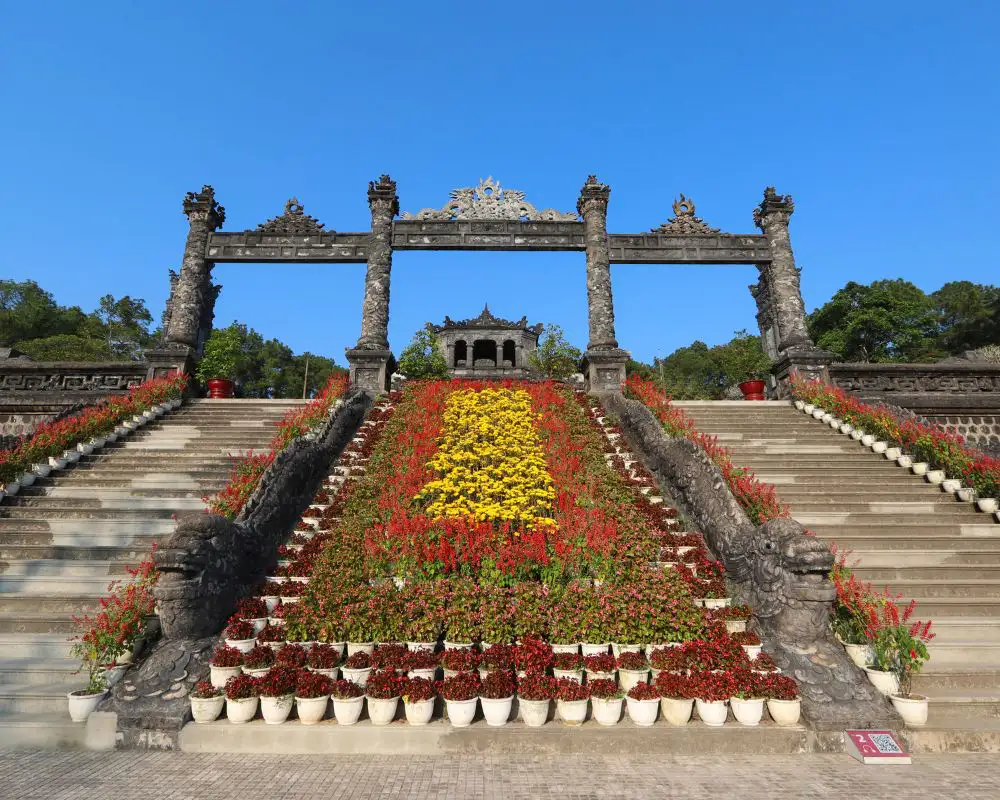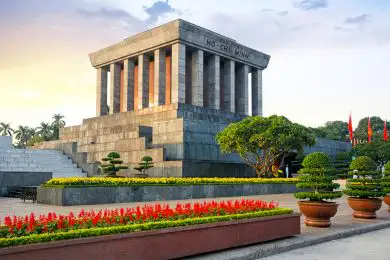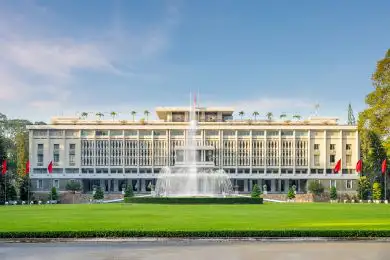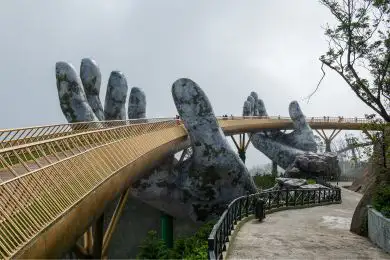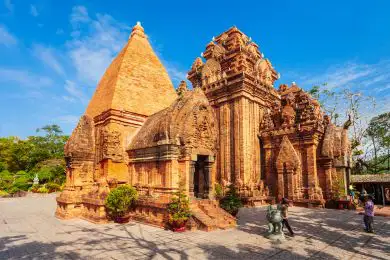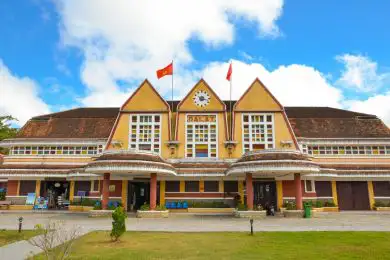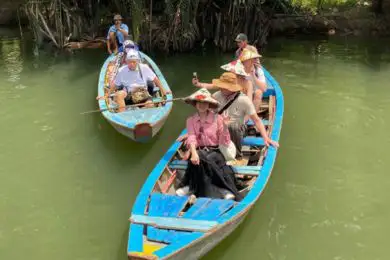Surrounding Hanoi, a treasure trove of attractions beckons. From the serene Duong Lam Ancient Village to the spiritual Perfume Pagoda, each site offers a unique glimpse into Vietnam’s soul. Northwards, Co Loa Citadel whispers ancient tales, while Thanh Chuong Viet Palace showcases cultural riches.
East lies the artisanal Dong Ky Village and peaceful Dau Pagoda. South, Bat Trang Village’s pottery and Le Mat’s culinary adventures await. West, the natural beauty of Ba Vi National Park and the craftsmanship of Van Phuc Silk Village enchant. These Top Tourist Attractions Around Hanoi promise enriching escapes into Vietnam’s history, culture, and nature, just a stone’s throw from Hanoi.
I. From South of Hanoi
1. Bat Trang Village
- Address: Bat Trang Village, Gia Lam District, Hanoi, Vietnam
- Entrance Fee: Free, pottery-making experience costs around VND 50,000 – 100,000 (approx. $2 – $4)
Located approximately 13km southeast of Hanoi’s city center, Bat Trang Ceramic Village is not only a fascinating Tourist Attractions Around Hanoi but also a proud representation of Vietnam’s traditional handicraft. Established in the 14th century, this village has flourished through its production of high-quality and diverse ceramic and pottery products.
Visitors to Bat Trang are treated to the sight of the pottery-making process from raw materials to finished goods. An unmissable experience here is participating in pottery-making classes where you can craft your own ceramic items.
Products made from ceramic at Bat Trang Pottery Village
Moreover, the village hosts a ceramic market, displaying and selling products made by the locals. You can purchase unique souvenirs such as cups, plates, tea sets, and feng shui statues, embodying rich Vietnamese culture.
You also can try the delicious local foods of Bat Trang Pottery Village like the aromatic grilled tapioca cake and simple yet tasty rice cake, all at affordable prices, around 6,000 VND each. And don’t miss out on the unique squid bamboo shoot soup, a special dish only found in Bat Trang, Vietnam, guaranteed to delight your senses.
Read more: Hanoi tour a day to Bat Trang ceramic village & Van Phuc silk village
2. Le Mat Snake Village
- Address: Le Mat Village, Viet Hung Ward, Long Bien District, Hanoi, Vietnam
- Price Range for Snake Dishes: VND 200,000 – 500,000 (approx. $8.5 – $21.5)
A visit to Le Mat Snake Village offers an entirely different experience. Known for snake hunting tradition and belong to Tourist Attractions Around Hanoi, this village surprises visitors with its specialty snake dishes, which are not only a test of courage but also a taste of exotic Vietnamese cuisine.
When you arrive here, you are welcomed into local homes converted into restaurants, where they’re presented with the opportunity to choose their snake. What follows is a culinary spectacle, often 8 – 12 dishes made from snake, as the snake is prepared in various ways – from snake meat sautéed with lemongrass and chili to snake wine, where the snake’s heart is often still beating.
While the idea of consuming snake may be daunting to some, the practice is deeply rooted in Vietnamese culture, believed to bring strength and vitality. The villagers of Le Mat are proud of their culinary heritage and are eager to share it with visitors, offering a unique insight into the traditions that have shaped their community.

You can try snake wine in Le Mat, which is an unforgettable experience. This unique beverage is made by infusing snakes in rice wine for months, or even years. It might sound intimidating at first, but surprisingly, the snake flavor isn’t noticeable.
II. From Easte of Hanoi
1. Dong Ky village
- Address: Dong Ky, Tu Son, Bac Ninh, Vietnam
- Entrance Fee: Free
Just a 25 km drive from Hanoi, Dong Ky Village in Bac Ninh province is famously known as the “Firecracker Village” and one of the top Tourist Attractions Around Hanoi. However, since the ban on firecrackers, Dong Ky has transformed its main craft to exquisite woodwork and furniture. This shift showcases the adaptability and creativity of the local craftsmen.
Today, Dong Ky is celebrated for its intricate wood carvings and high-quality furniture, which are sought after both domestically and internationally. As visitors wander through the village, they are greeted by the sound of chisels and hammers, a testament to the bustling activity that woodcrafting brings to the area.
Workshops are open to visitors, offering a firsthand look at the skill and patience required to create the elaborate designs found on tables, chairs, and cabinets.
The transformation of Dong Ky from firecrackers to furniture is not only a story of change but also of preservation. The village continues to thrive, maintaining its cultural identity while adapting to modern demands. Visitors leave with an appreciation for the craftsmanship and the enduring spirit of the local community.
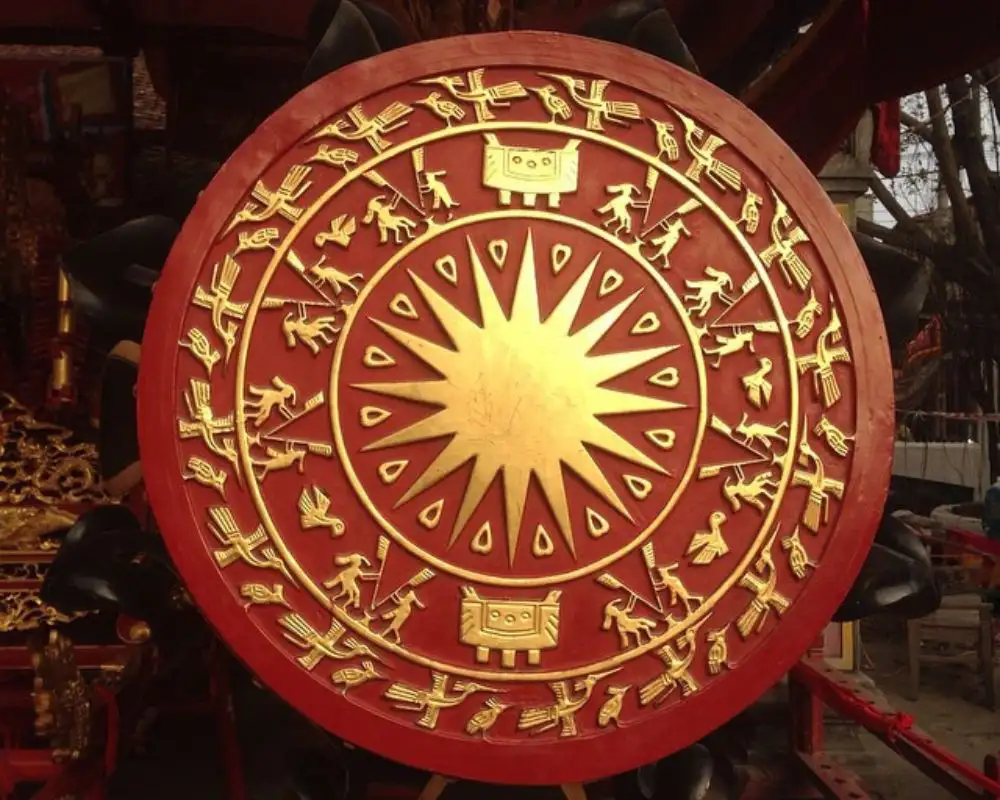
2. Dau pagoda
- Address: Thuan Thanh, Bac Ninh Province, Vietnam
- Entrance Fee: Free, but donations are welcomed
Dau Pagoda, located in Bac Ninh Province, is revered as the oldest Buddhist pagoda in Vietnam, with its history dating back over a thousand years. This ancient structure is not only a place of worship but also a site of significant historical and architectural value.
The pagoda is nestled in a serene environment, surrounded by lush greenery and tranquil waters, which adds to the spiritual atmosphere of the site. As visitors approach, they are captivated by the ancient architectural designs that have withstood the test of time. The pagoda houses rare artifacts and statues, providing insight into the Buddhist practices and cultural heritage of Vietnam.
One of the most intriguing aspects of Dau Pagoda is its legend involving the four sacred animals: the dragon, unicorn, turtle, and phoenix. These symbols play a crucial role in the pagoda’s mythology and are said to protect the site and its believers.
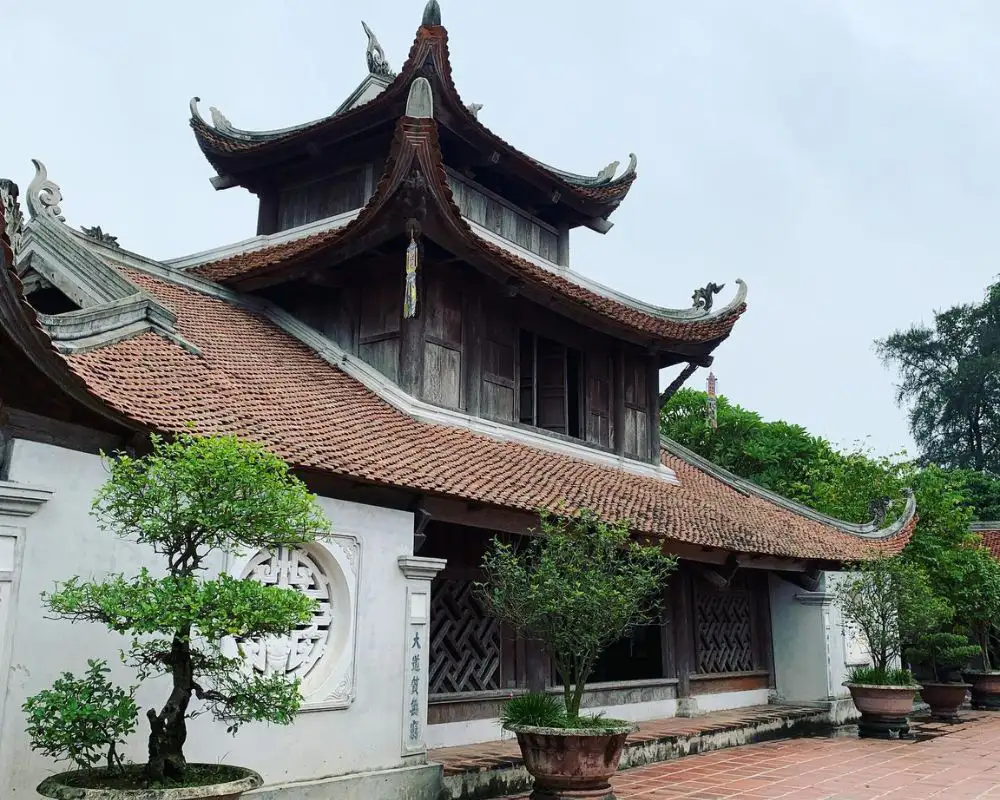
III. North of Hanoi
1. Co Loa citidel
- Address: Co Loa, Dong Anh District, Hanoi, Vietnam
- Entrance Fee: Free
Co Loa Citadel, located in the Dong Anh District of Hanoi, is one of Vietnam’s most important and ancient historical sites. Believed to have been constructed during the 3rd century BC, Co Loa Citadel serves as a symbol of the country’s ancient military genius and cultural depth.
As visitors approach the site, they are greeted by massive walls and remnants of what was once a thriving center of the ancient Vietnamese kingdom. The citadel is structured in a spiral-shaped design, which is both fascinating and unique, showcasing the advanced architectural capabilities of the time.
The legend of Co Loa is intertwined with the story of An Duong Vuong, a king who, according to legend, was betrayed by his own daughter, leading to the fall of the citadel. Today, the site is not only a place for historical exploration but also a serene escape from the bustling city life, offering peaceful surroundings and lush greenery.
The area surrounding Co Loa Citadel is dotted with small temples and shrines, each telling a part of the citadel’s storied past. You can spend hours wandering these historical grounds, reflecting on the power and culture of ancient Vietnam.
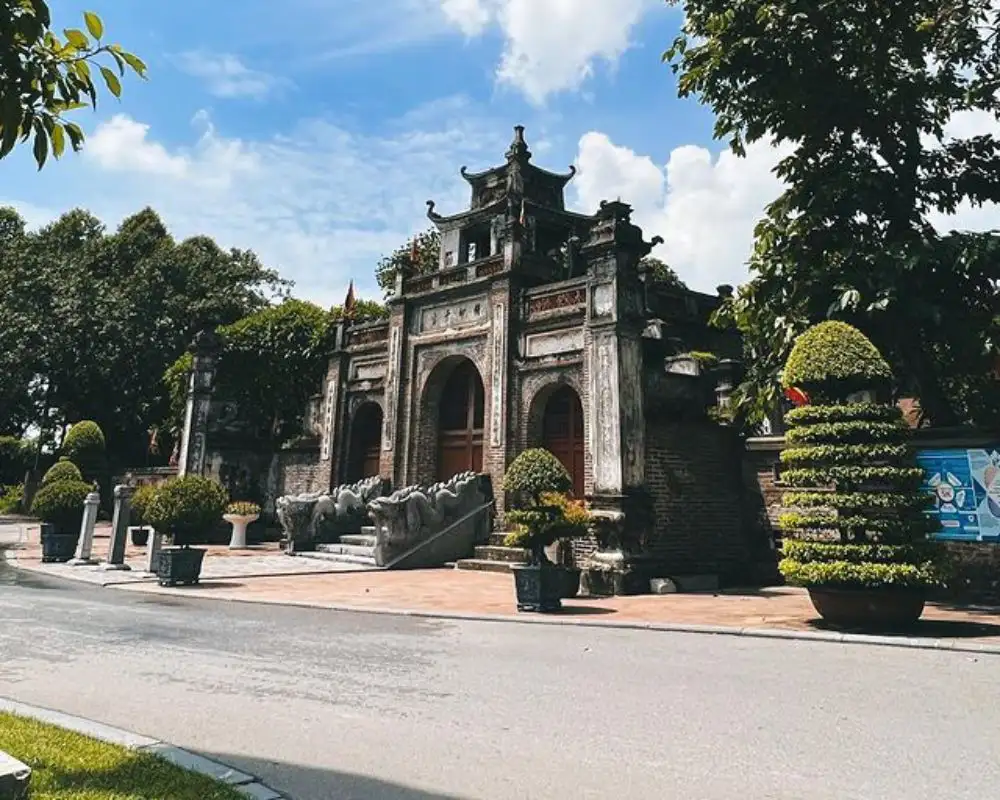
2. Thanh Chuong Viet palace
- Address: Hien Ninh Commune, Soc Son District, Hanoi, Vietnam
- Entrance Fee: Approximately VND 100,000 (about $4.3)
Nestled in the serene landscapes of Soc Son District, Thanh Chuong Viet Palace stands as a testament to the artistic legacy of Thanh Chuong, one of Vietnam’s most celebrated artists. The “palace” is actually a sprawling estate filled with traditional Vietnamese architecture and art.
As you step into Thanh Chuong Viet Palace, you’re immediately enveloped in a world where every corner tells a story. The estate comprises various traditional structures, including ancient houses, pagodas, and theaters, meticulously restored and arranged to create a living museum of Vietnamese culture.
The main building, resembling a traditional Vietnamese house on stilts, showcases a vast collection of artworks ranging from paintings and sculptures to antiques that span centuries of Vietnamese history. These pieces not only highlight Thanh Chuong’s talent but also reflect the diverse cultural influences that have shaped Vietnam.
The estate regularly hosts cultural performances, traditional music shows, and art exhibitions, bringing to life the customs and traditions that have been passed down through generations.
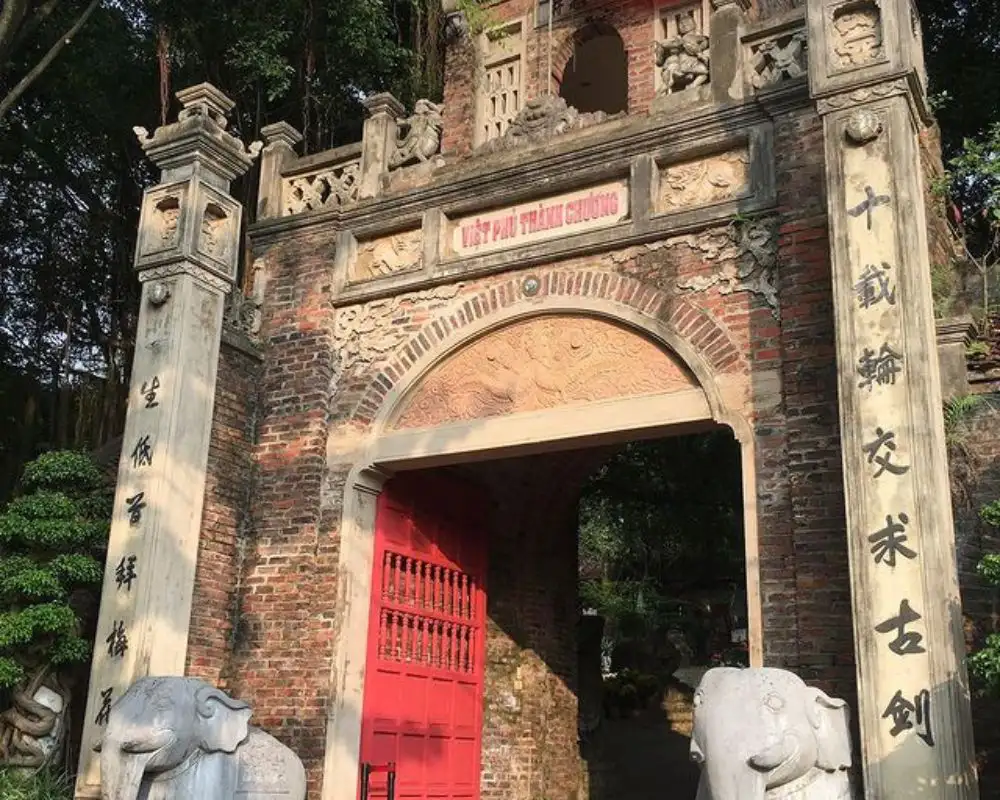
You can also participate in workshops on traditional Vietnamese crafts, such as lacquer painting and pottery, offering a hands-on experience with the country’s artistic practices. These activities provide a deeper understanding and appreciation for the skill and creativity that define Vietnamese art.
Surrounding the architectural and artistic marvels are the palace’s lush gardens and peaceful ponds, creating an oasis of tranquility. Strolling through these green spaces, one can’t help but feel a sense of peace and connection to nature. The gardens are not only beautiful but also serve as a habitat for various plant and bird species, adding to the estate’s biodiversity.
IV. West Of Hanoi
1. Ha Tay province
- Address: Ha Tay is now part of Hanoi, extending to the west of the city.
- Entrance Fee: Free to explore, though some specific attractions may have their own fees.
Exploring the area west of Hanoi, once known as Ha Tay province, is one of Top Tourist Attractions Around Hanoi and reveals a landscape rich in natural beauty, historical depth, and cultural vibrancy. Though Ha Tay was officially merged with Hanoi in 2008, expanding the capital’s territory, the region retains a distinct identity that captivates visitors.
From its serene natural landscapes to its revered cultural sites, Ha Tay offers a tranquil escape from the bustling city life, inviting travelers into its peaceful embrace. You can explore some tourist attractions below:
Perfume Pagoda
One of Ha Tay’s most famous attractions is the Perfume Pagoda, a stunning complex of Buddhist temples and shrines set among the limestone cliffs of the Huong Tich mountains. The site is not just a religious sanctuary but also a place of natural beauty and belong to Top tourist attractions around Hanoi that you can’t miss.
The journey to the Perfume Pagoda is as enchanting as the destination itself, beginning with a peaceful boat ride along the Yen River, flanked by rice paddies and jagged peaks, followed by a hike up the mountain paths (or a cable car ride) to reach the main temple.
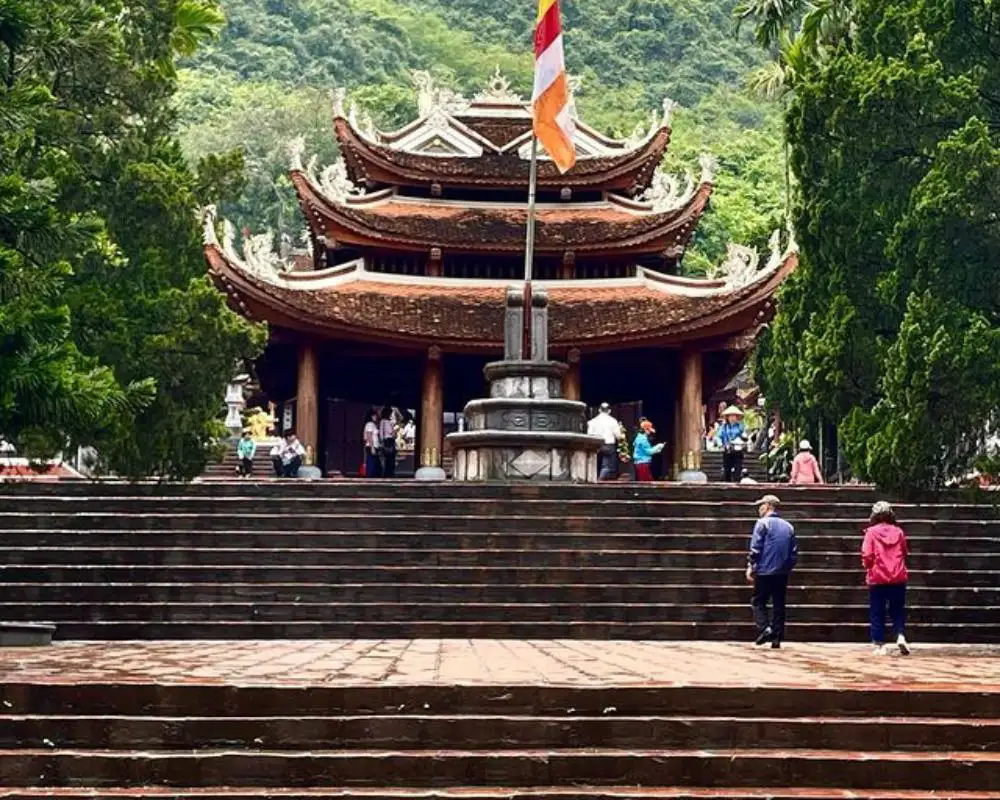
Duong Lam Ancient Village
Next, you can visit Duong Lam Ancient Village from our Hanoi City Tour – Duong Lam Village & Van Phuc Silk village emerges as a living museum, captivating those who wander its narrow alleys and traditional houses. This village, a testament to Vietnam’s age-old architectural styles, is made up of structures built from laterite and mud, some of which have stood for over four centuries. As you meander through Duong Lam, they’re transported to a different era, one that preserves the essence of Vietnamese rural life.
This village is not only significant for its architectural heritage but also for its historical importance, being the birthplace of two of Vietnam’s national heroes, Phung Hung and Ngo Quyen. Their legacy, commemorated within the village through temples dedicated in their honor, adds a layer of historical depth to the visitor’s experience, blending seamlessly with the cultural vibrancy of Ha Tay.
Ba Vi National Park
If the Perfume Pagoda offers a spiritual journey amidst natural splendor, Ba Vi National Park presents an escape into the wilderness, marked by its lush forests, diverse wildlife, and the mystical Ba Vi mountain range. Dominated by three main peaks, the park is a haven for nature lovers and adventure seekers alike.
The highest peak, King Peak, not only provides breathtaking panoramic views of the surrounding landscape but also houses a temple dedicated to President Ho Chi Minh, merging natural beauty with historical reverence. The park’s rich biodiversity and historical sites, including remnants of French colonial architecture, make it a microcosm of Vietnam’s natural and historical richness.
Ba Vi National Park, like Duong Lam Ancient Village and Perfume Pagoda encapsulates the essence of Ha Tay’s distinct identity, offering a peaceful retreat from modern life while enriching the visitor’s understanding of Vietnam’s natural and cultural heritage.
2. Van Phuc Village
- Address: Van Phuc, Ha Dong District, Hanoi, Vietnam
- Entrance Fee: Free, with silk products available for purchase
Van Phuc Silk Village, nestled in what is now the Ha Dong District of Hanoi, is one of Top Tourist Attractions Around Hanoi and a testament to the enduring art of silk weaving in Vietnam. Known as the oldest silk village in Vietnam, Van Phuc has a history that dates back over a thousand years, playing a crucial role in the development of Vietnamese silk and contributing to its fame worldwide.
Visiting Van Phuc Village, you are immediately struck by the rows of silk shops lining its streets, showcasing a dazzling array of silk products. From traditional ao dai (Vietnamese national garment) to modern fashion items and home decorations, the silk here is known for its quality and intricate patterns.
Shops sell silk products at Van Phuc Village
The heart of the village experience is witnessing the silk-making process firsthand. Artisans at Van Phuc still employ traditional techniques, from silkworm breeding to weaving on ancient looms. This hands-on approach not only ensures the high quality of the silk but also preserves the cultural heritage of silk making in Vietnam.
For those interested in textiles, fashion, or simply looking for unique souvenirs, Van Phuc Silk Village offers an unparalleled opportunity. You can learn about the meticulous process of silk production, from cocoon to fabric, and appreciate the craftsmanship involved in creating each piece of silk.
Engaging with local artisans, understanding the history of silk weaving, and exploring the quiet streets of the village provide a peaceful and enriching experience, contrasting with the hustle and bustle of Hanoi.



